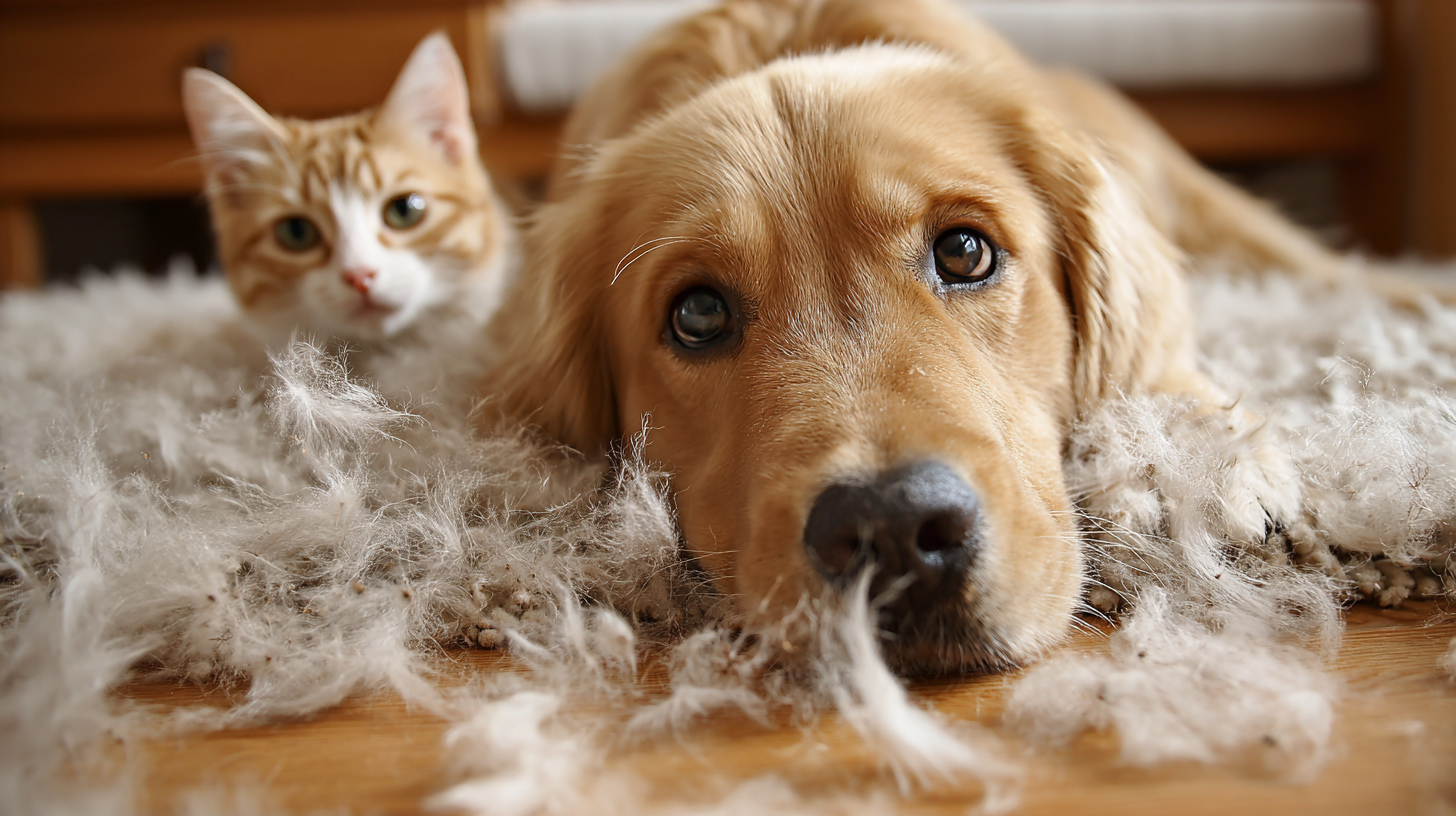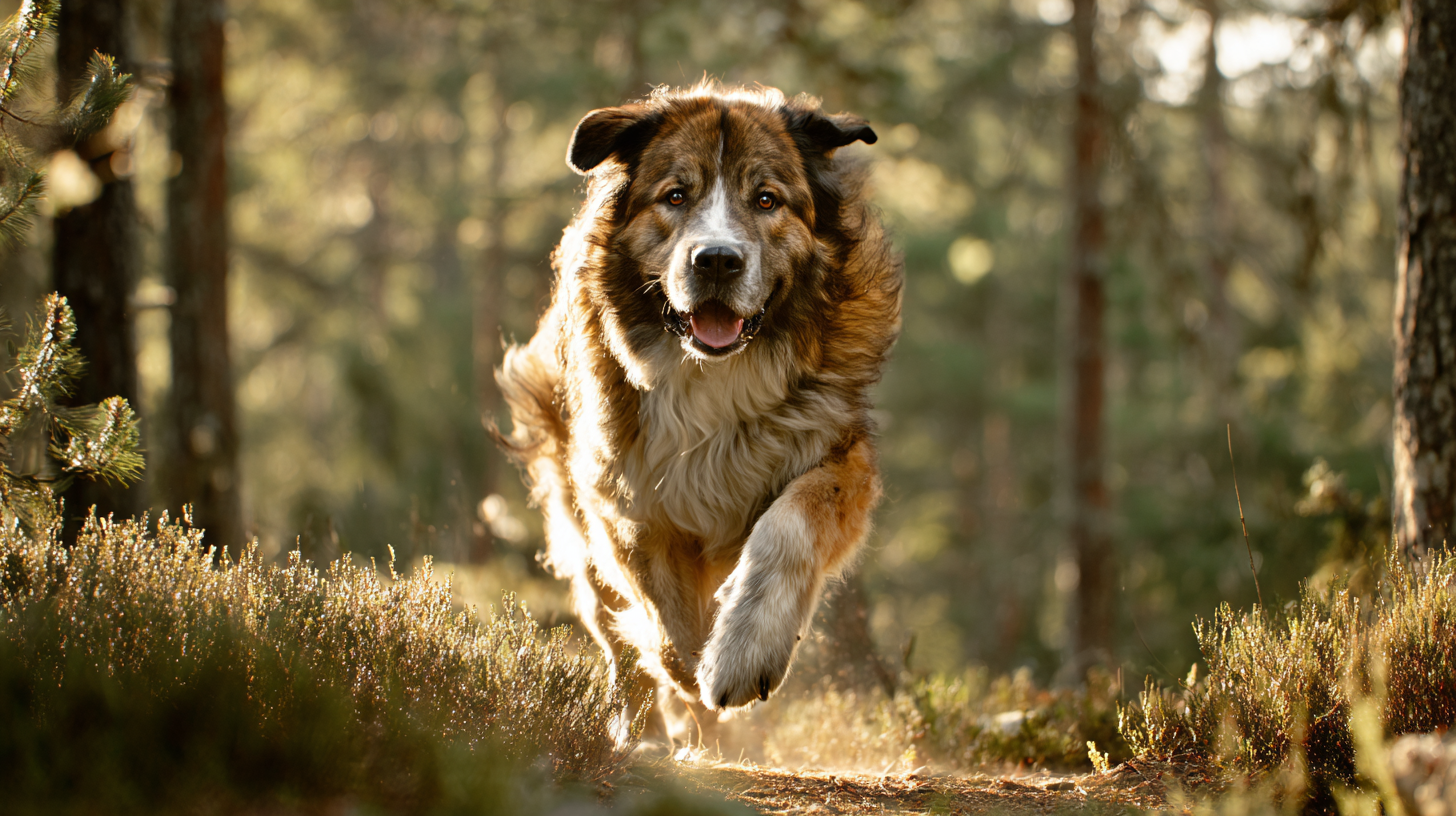Finding pet hair on everything is something every owner knows. It’s a small price to pay for the fun we have with our pets. While some shedding is normal, shedding too much can be a sign of other problems. This guide will look at the common reasons for shedding, the part food plays, and the daily care you can do to manage it. This will help you know what is normal and when you should worry.
5 Common Causes of Pet Hair Loss
Shedding is natural, but when it seems like too much, it's often a sign of another problem. Knowing the possible reasons is the first step to fixing the issue and making sure your pet is healthy.
1. Poor Nutrition
A pet's coat shows you how healthy they are on the inside. A diet that doesn't have enough good high protein food, healthy fats, and other important vitamins will often lead to a dull, weak coat that sheds a lot. The body uses food for important organs first, so the skin and coat are often the first places to show signs of a bad diet.
2. Stress and Anxiety
Just like people, pets can show stress with their bodies. Big changes like moving, a new pet, or being left alone can cause a dog or cat to shed more than normal. This kind of shedding from stress is usually not for long and should stop once the pet gets used to the new situation.
3. Allergies
Allergies are a very common reason for hair loss in pets. This can be a reaction to something around them, like pollen or dust, or a problem with something in their food. Allergies usually make the skin itchy. This leads to a lot of scratching, licking, and biting, which in the end causes hair loss and red skin.
4. Parasites and Skin Infections
Bugs on the outside of their body are a big reason for itching and hair loss. Fleas are the most common problem, but mites and ticks can also cause a lot of skin trouble. Besides bugs, infections from bacteria or fungus, like ringworm, can lead to red spots, sores, and clear patches of hair loss.
5. Other Medical Conditions
Sometimes, shedding too much is a sign of a more serious health problem inside their body. Hormone problems, like thyroid issues in dogs, can cause hair loss in a matching pattern on both sides of the body. Other problems with the liver, kidneys, or immune system can also show up as bad skin and coat.
Seasonal Hair Loss and Normal Shedding
For many dogs and cats, shedding a lot two times a year is a normal part of life. People often call this "blowing their coat." This is linked to how hair grows and the changing seasons, as pets get their coats ready for different temperatures.
Hair grows in a cycle with three parts: a growing part, a middle part, and a resting part. Shedding happens when a hair is done resting and it falls out to make room for a new one. In the spring, pets lose their thick winter fur to get ready for warmer weather. In the fall, they often have another, smaller shed to lose their light summer coat and grow a new, thick one for winter.
It is good to know that indoor pets, who live with fake light and steady temperatures, might not have big seasonal sheds. Instead, they often shed a little bit all the time, all year long.
3 Diet Tips to Reduce Hair Loss in Dogs and Cats
Food is the best tool for a healthy coat and for managing normal shedding. A good, balanced diet gives them the parts they need to build strong hair and healthy skin.
1. The Power of Protein
Hair is mostly made of a protein called keratin. If a pet's food is low in protein, or the protein is bad quality and hard to digest, their body won't have what it needs to grow strong, healthy hair. This leads to a weak coat that sheds easily. When you choose a food, look for a high protein pet food where a named animal, like chicken or fish, is the first ingredient.
2. The Importance of Healthy Fats (Omega Fatty Acids)
Healthy fats, like Omega-3 and Omega-6, are very important for skin and coat health. They are a key part of what keeps skin from getting dry. They help keep skin moist and soft from the inside. Healthy skin is the start of a healthy coat. These fats can also naturally help with swelling or redness. Many good omega 3 foods for dogs and cats have fish oil, flaxseed, or chicken fat to give them these important fats.
3. Vitamins and Minerals for a Healthy Coat
A good diet will also have other important things for skin health. Vitamin E is a strong antioxidant that helps protect skin cells. Biotin is a B-vitamin that helps the body use protein and fats. Zinc is also needed for healthy skin and a strong coat.
Daily Care and Tools to Reduce Hair Loss
You can't stop a healthy pet from shedding, but you can control the amount of loose fur in your home with a regular grooming plan.
Regular Brushing
This is the best way to control shedding. Brushing takes out dead, loose hair right from your pet's coat before it can fall on your floor. The right kind of brush depends on your pet’s coat.
- Slicker brushes are good for pets with medium to long hair to get out tangles and loose fur.
- Undercoat rakes are for dogs with double coats, like Huskies, to get out a lot of fur when the seasons change.
- Rubber combs are great for pets with short hair because they gently take out loose hair and feel good on the skin.
Proper Bathing
Baths help get rid of dead hair, but be careful not to do it too much. Bathing your pet too often can take the natural oils from their skin, which makes it dry and can cause more shedding. Use a soft shampoo made just for pets.
Consistent Parasite Prevention
Keeping your pet on flea and tick medicine all year is a very important part of skin and coat care. This stops the bad itching that leads to hair loss from bugs.
When to Take Your Pet to the Vet
Normal shedding is when hair falls out from all over the body a little at a time. But hair loss that is not normal often has clear warning signs that mean you should go to the vet.
- Clear Bald Patches: If your pet is losing hair in clumps or has spots with no hair at all, it could be a sign of a problem like ringworm or mites.
- A Lot of Itching and Scratching: All pets scratch, but if your pet is always scratching like crazy, it's a clear sign of a problem like allergies or fleas.
- Red or Sore Skin: Look for scabs, sores, or red spots. These are signs of a problem that needs to be checked by a vet.
- Hair Loss in a Matching Pattern: If your pet is losing hair in the same pattern on both sides of its body, this is a common sign of a hormone problem.
- Hair Loss with Other Symptoms: If the shedding happens with other changes in your pet’s health, like a change in eating, weight, or energy level, you should see your vet right away.
Key Learnings on Reducing Shedding Through Care
Shedding is a normal and needed process for most dogs and cats, but a good diet and grooming are the key to handling it. By giving your pet a high-protein food with a lot of healthy fats, you are helping them build a healthy coat from the inside. Doing this along with regular brushing will cut down on the amount of fur in your home. Always watch your pet's coat for any strange changes and talk to your vet if you see any signs of hair loss that is not normal.




Leave a comment
All comments are moderated before being published.
This site is protected by hCaptcha and the hCaptcha Privacy Policy and Terms of Service apply.